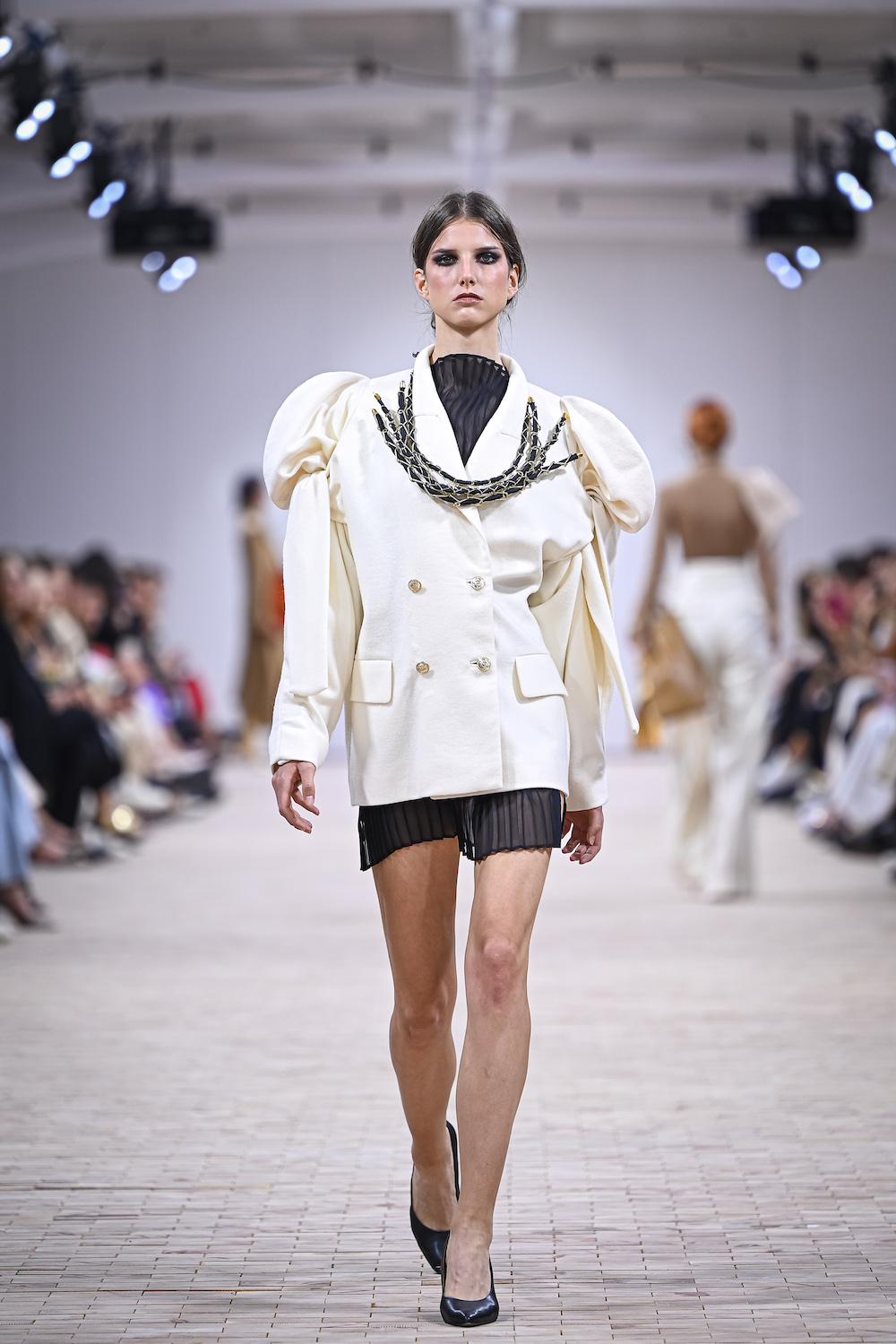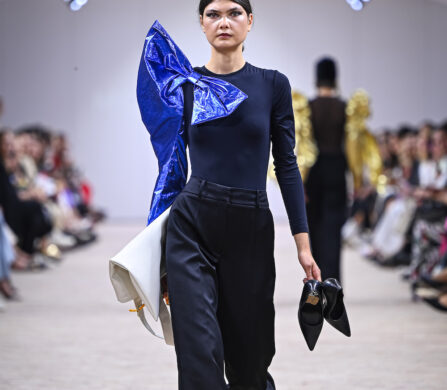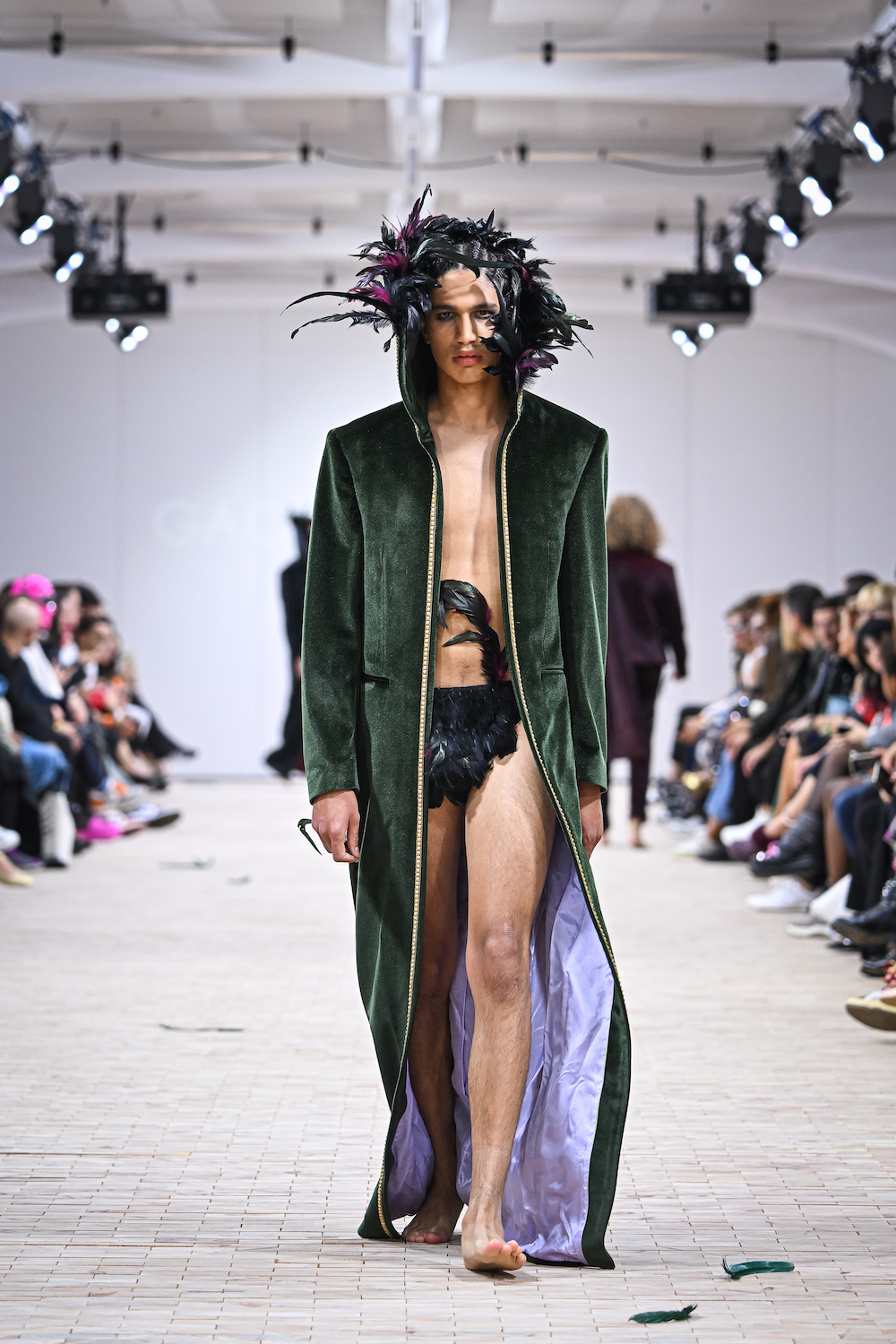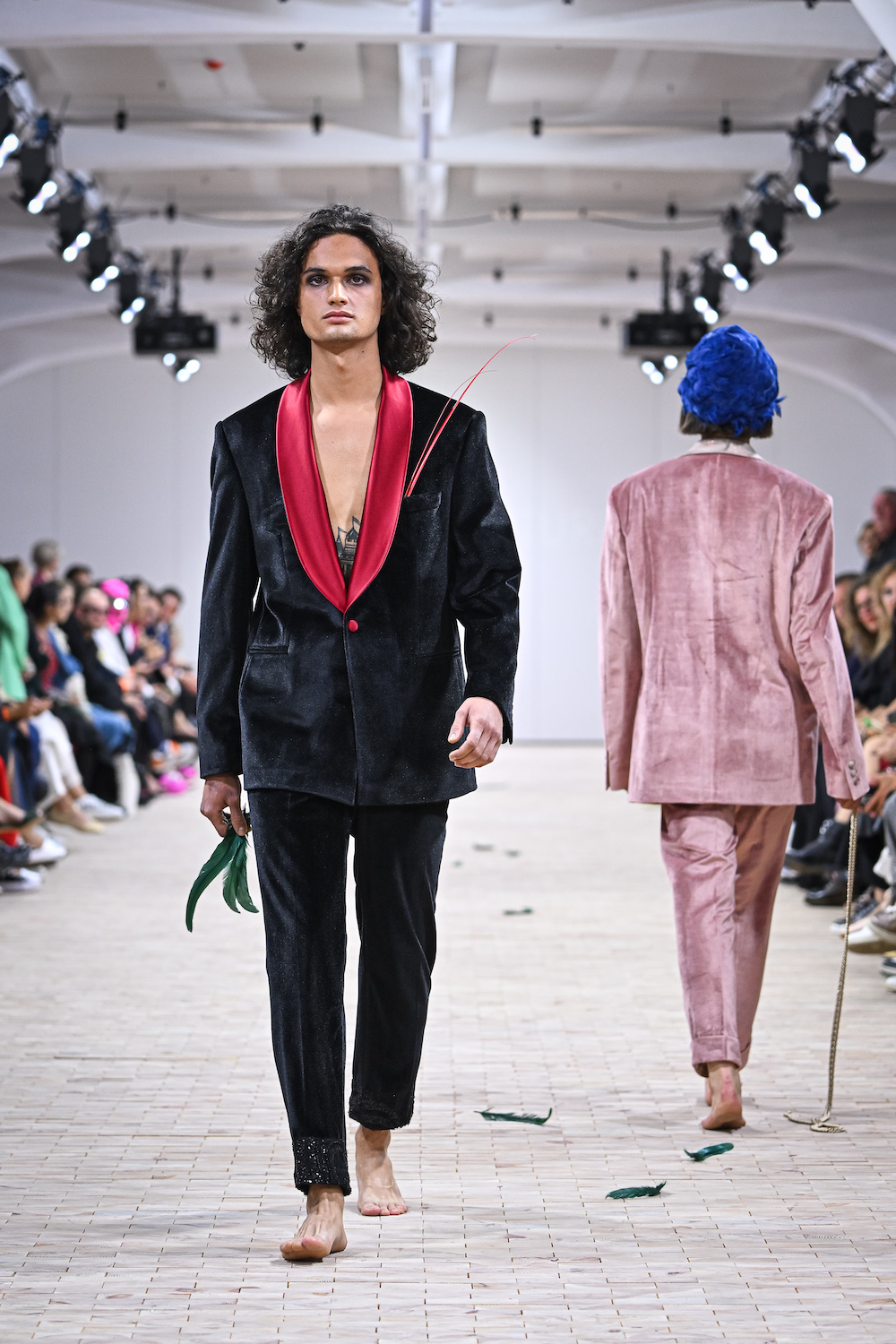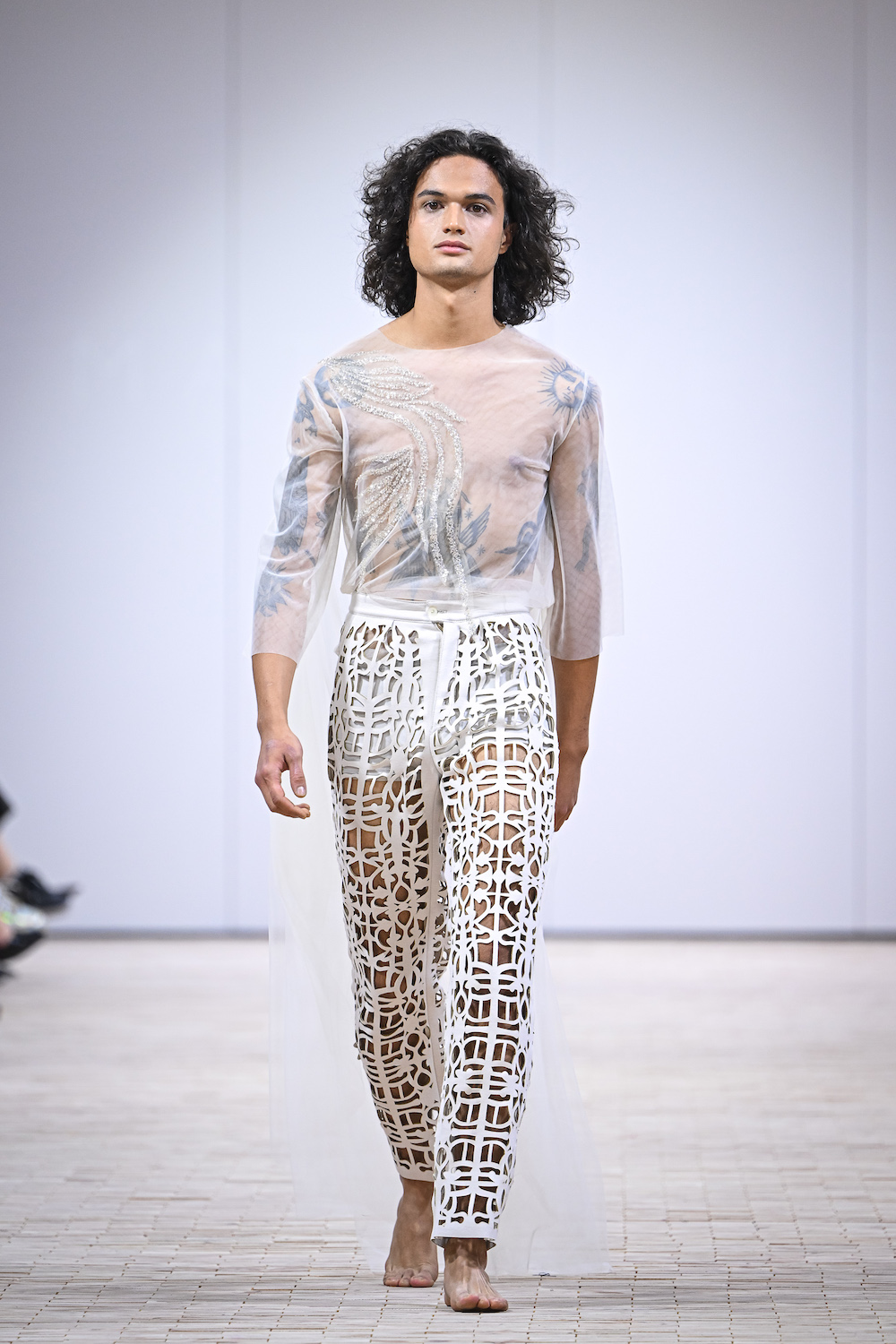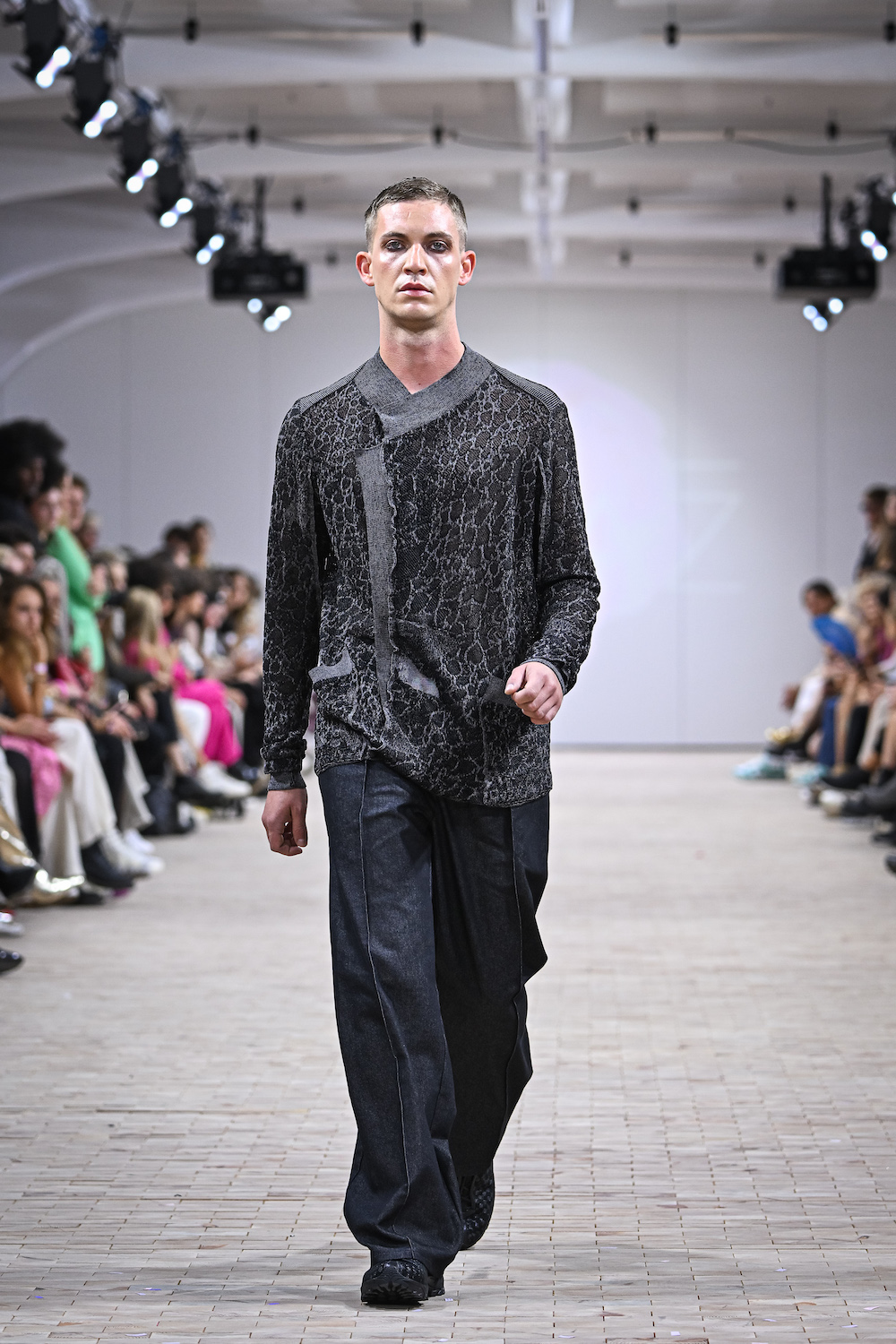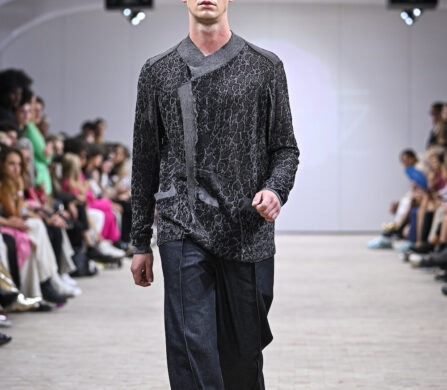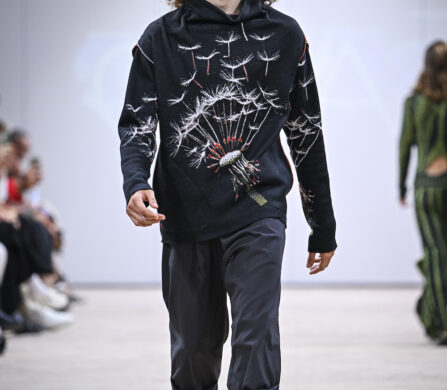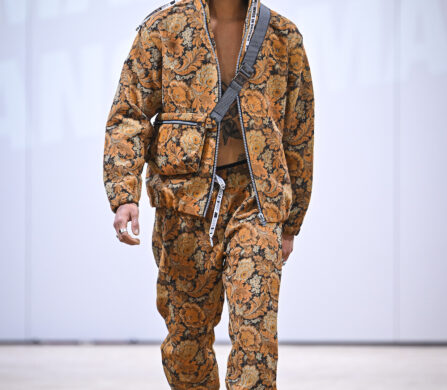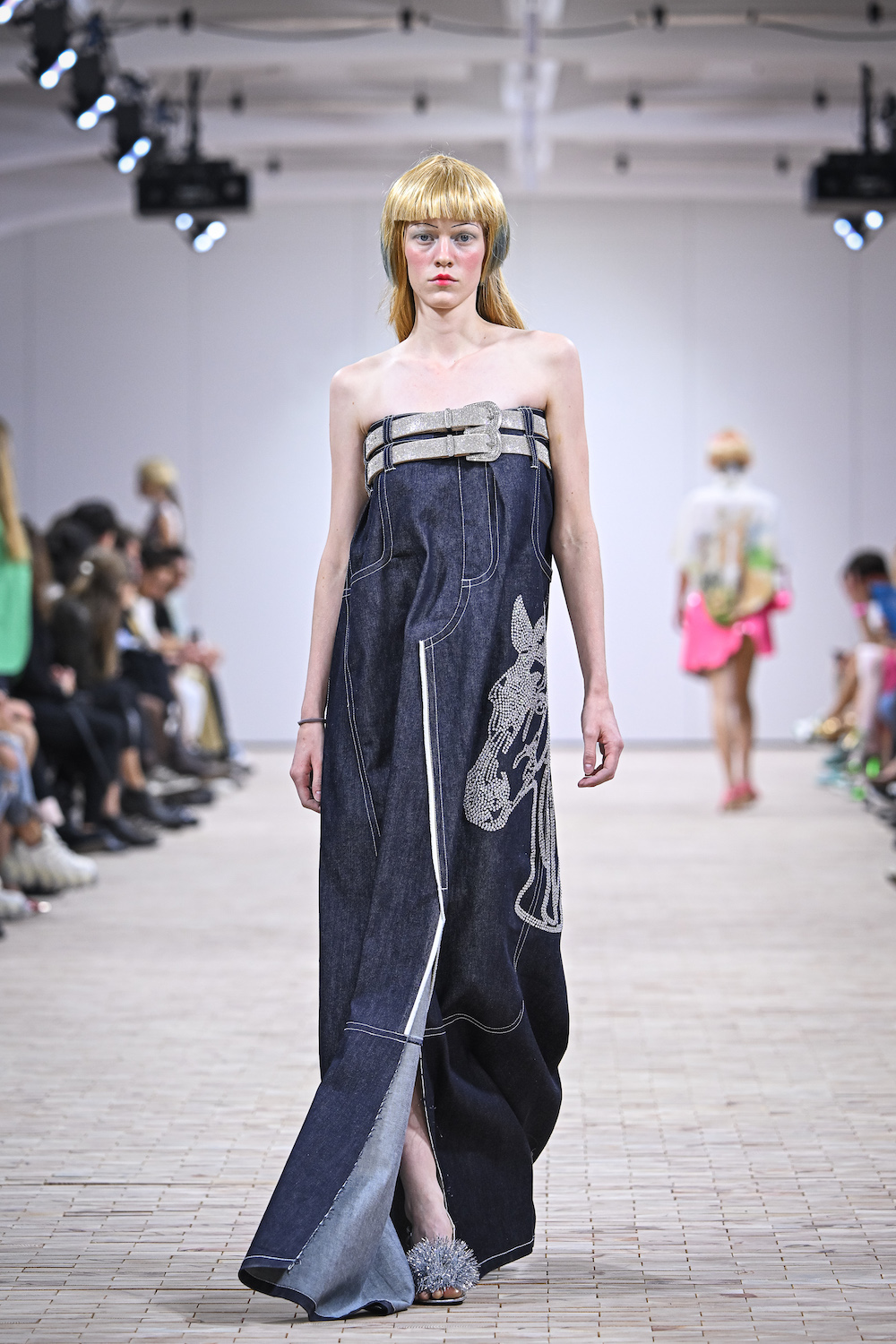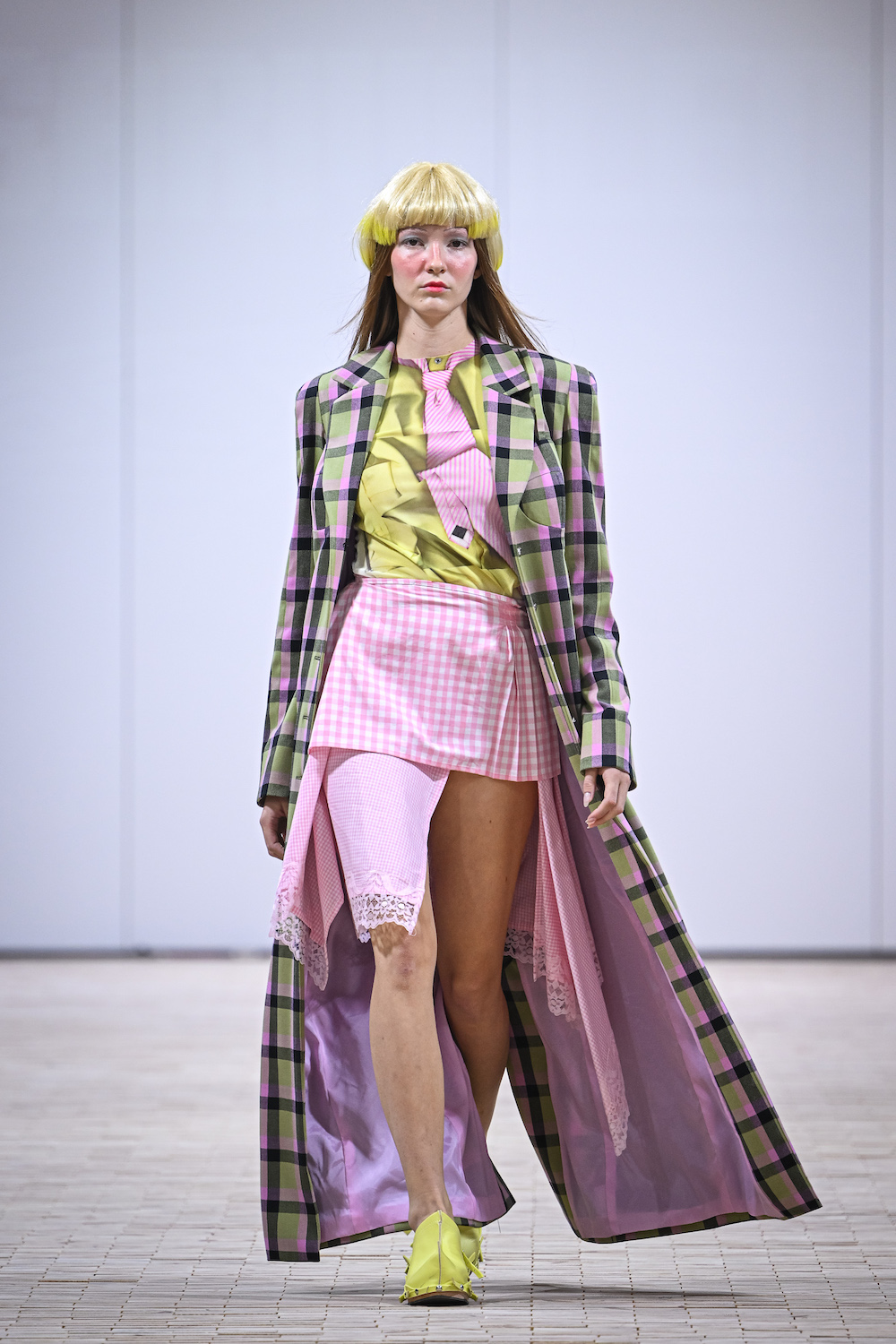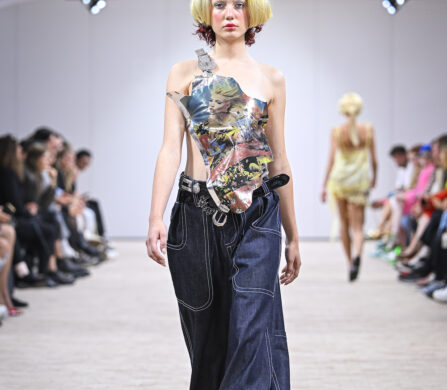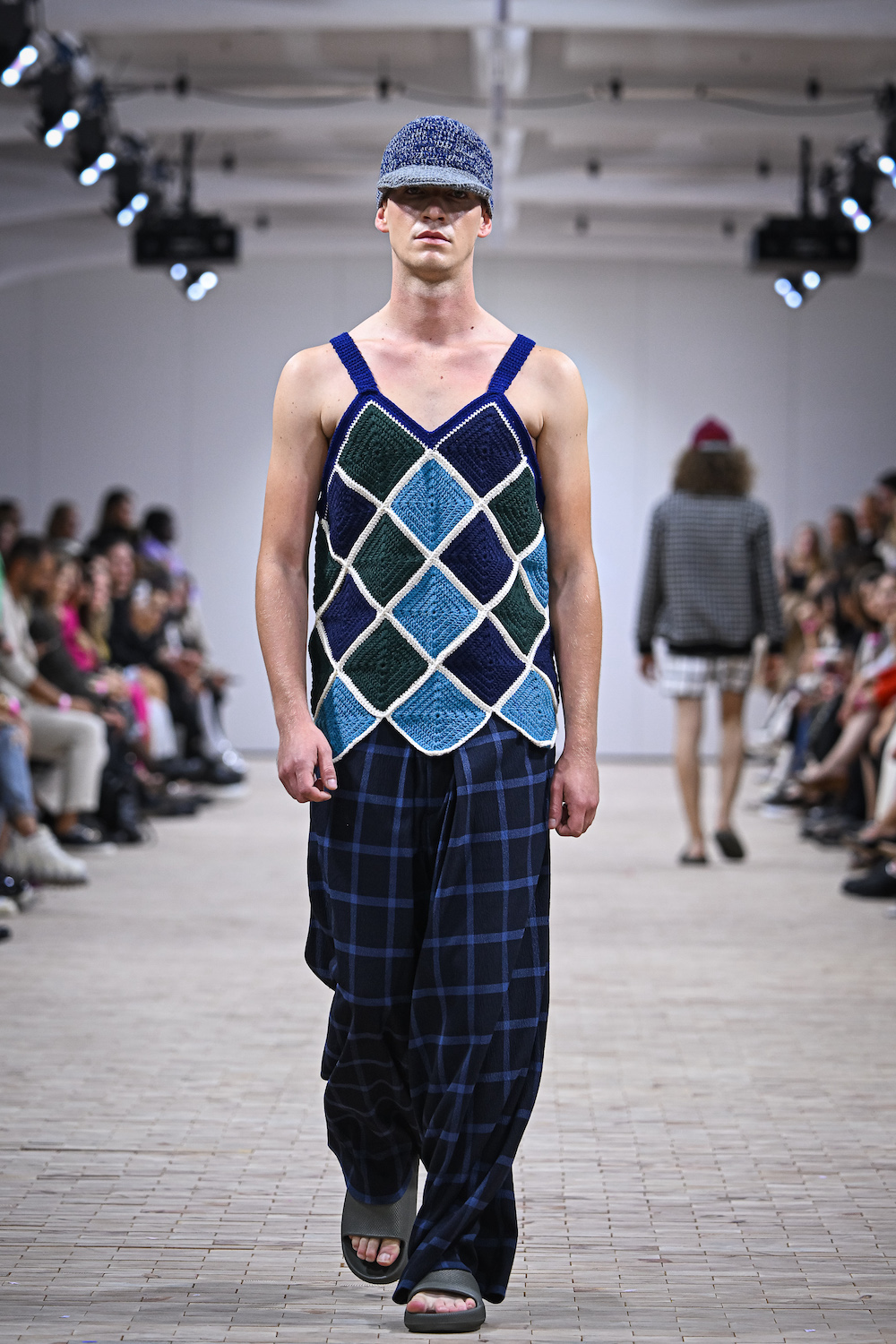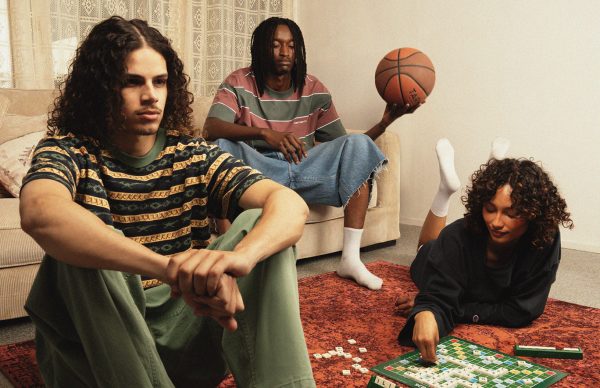When we visited Ljubljana Fashion Week last year, we reported on the green credentials of Slovenian and regional designers and the often handmade, upcycled or limited-edition elements of their production. Sustainability remained very high on the agenda at the 14th edition, which took place this month at Center Rog, a disused bicycle factory that’s been transformed into a creative and social hub. However, what struck us most this time round was the high-octane glamour present in so many of the collections. From statement suits to sequins and all things shiny, dressing up was definitely de rigueur once more.
There were several interesting collaborations on this year’s catwalk, including the pairing of Metod Črešnar and Anja Medle, under the name of MC x MEDLE. Womenswear label MEDLE aims to produce feminine, sexy, colourful and playful collections, with a focus on the female body, and this latest offering, entitled Entrée, was no exception. Although the brand often takes its inspiration from the 80s and menswear, the masculine cuts were merged with bold colours, pleating in sheer and iridescent fabrics, plenty of metallics and a splattering of sparkling embellishments.
Make-up artist and fashion and costume designer, Milan Gačanovič presented his latest creative venture, Gacho Couture. Gačanovič was keen to go back to basics by rejecting “unnecessary experimentation with cuts and the resulting unflattering pieces,” and instead return to classic tailoring and quality production. The fabrics and accessories are where the experimentation came in, with the use of materials originally intended for upholstery, decoration or theatrical costume. He chose to present 13 looks, to commemorate the 13 years since he showed his footwear collection.
Another designer returning to the catwalk was Dejan Petrović, who made an impact some years ago at Fashion Scout SEE. This time round, he showcased his brand Prince de Roses Noires, and proved with his “gender bending clothing inspired by current cultural movements” that glamour and non-conformity can go hand in hand.
M Fiction, created by sisters Mateia and Mia Aleksandra Lukač, is one of the most sought-after labels in the region. It made a return to Ljubljana Fashion Week, where it first began its ascent, with a collection that explored a post-apocalyptic future on the moon. Updated takes on the classic trench were juxtaposed with head-to-toe shimmering body suits and jewelled full face masks.
Taking a step back in time, Royal College of Art graduate Matic Veler draws inspiration from the Baroque architecture and decoration of the 17th and 18th Centuries. Laser cutting – in both matte and metallic fabrics – was prominent in his latest collection, as was the use of tulle, whether in voluminous dresses for women or sheer and embellished t-shirts for men.
AEMONA was developed by Instituto Marangoni graduate Anika Opara with the aim of merging digital and physical fashion processes. The collection UMBRA explores the “hidden layers of the human mind” and expresses duality through the contrast between different textures, light and shadow, the bold and the delicate. A predominantly black collection was therefore interspersed with shots of silver or vibrant colour.
Knitwear might not be the first thing that springs to mind when one thinks about glamour, but that’s exactly what Studio Draž brought with its Blossom collection. Inspired by the flora of Slovenia’s botanical gardens, the designers were careful to avoid the clichés of florals in fashion by focusing instead on innovative techniques, such as eight-coloured jacquard, to bring an intense richness to the fabric. A family company with a 30-year history, Draž is known for its combination of environmentally friendly practises and use of new technologies. For the Blossom collection, it experimented with AI image generators for the first time.
Creating glamorous fashion often comes with a human and environmental cost, but Made in Anselma’s garments are all handmade and knitted using vintage materials, with minimal or zero waste, making them very limited-edition. This season, the collection was more lavish and intricate, with patchworking and a multitude of inserts composed from unusual sources, such decorative ribbons from 1970s curtains, tassels and scraps of lace or leather.
Croatian brand Mateyaneira, designed by Mateja Dujić and Neira Sinanbašić, also shuns hyper-production in favour of “handmade high fashion”, fair trade policies and the use of deadstock fabrics. The latest collection included oversized coats and blazers worn with lace bodysuits, lots of leather and some more ‘formal’ pieces, but the designers stress that their garments are seasonless, wearable and can be donned “whenever and wherever”, with no special occasion needed.
For those less inclined to dress up to the nines, Macedonian agender brand Ludus, which works exclusively with natural fabrics, presented a more minimalist aesthetic, while established Slovenian designer Ana Jelinič’s pared back womenswear puts the emphasis on “unique details and gentle colours”. Kiss the Future, another label that uses deadstock fabrics, continued to impress with its young and vibrant designs and Sarivalenci, which is inspired by youth cultures, contrasted Rococo and business wear in its collection Marie Antoinette in an office. The collaboration that caught our attention came from Almirasadar x Petja Zorc, with a heritage sports inspired, unisex collection featuring eye catching knits and slashed denim referencing badminton nets.
With over 30 designers showing this season, there is certainly something for everyone, no matter where they identify on the glam spectrum. As Executive Producer of LJFW Melinda Rebrek explains, “We also emphasise the importance of authenticity and self-acceptance, freedom from social expectations and of focusing on your true image. Each individual is a valuable part of the mosaic of the world with a unique perspective and contribution, and Ljubljana Fashion Week is one of the events that embraces all forms of creativity with joy and pride.”
Find out more about Ljubljana Fashion Week here.
words. Huma Humayun
photography. Jure Makovec





